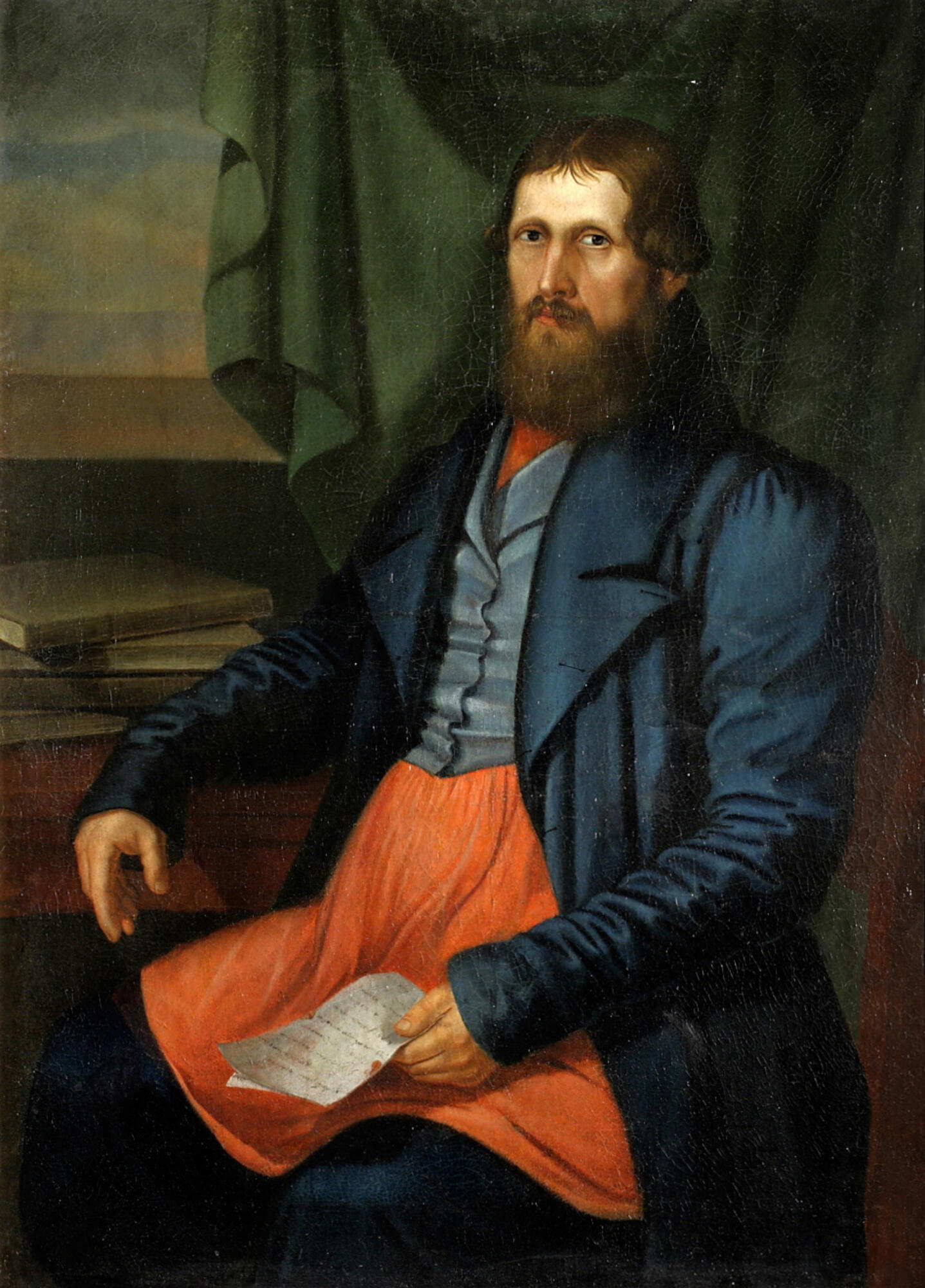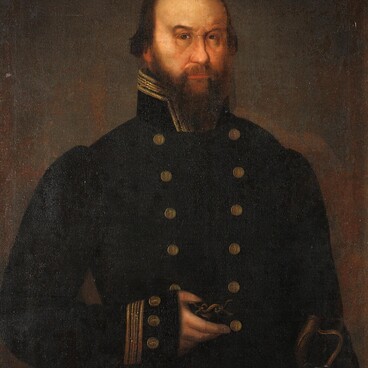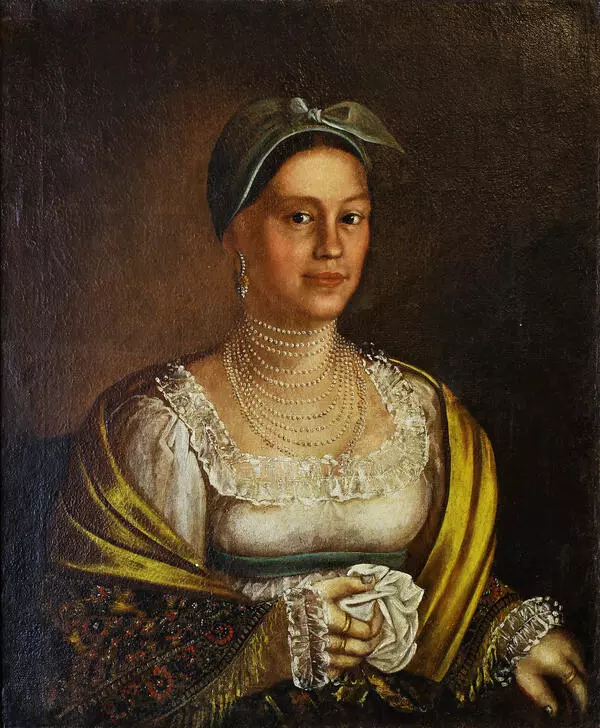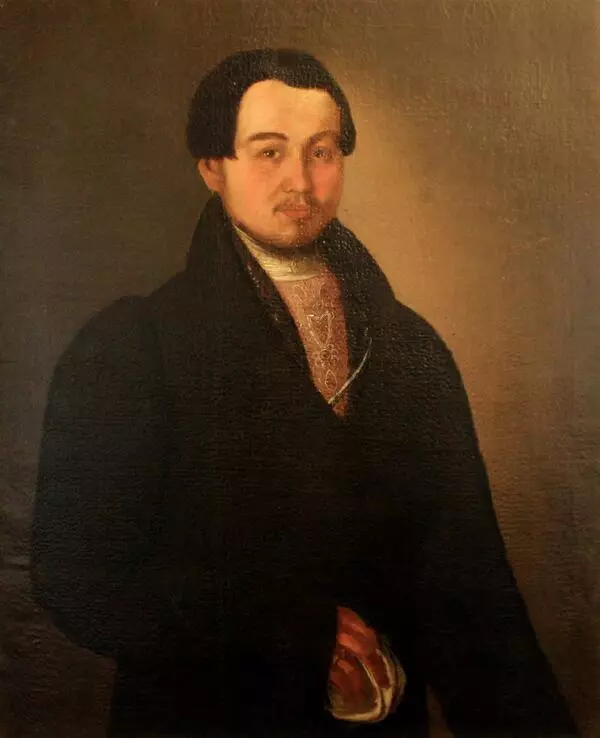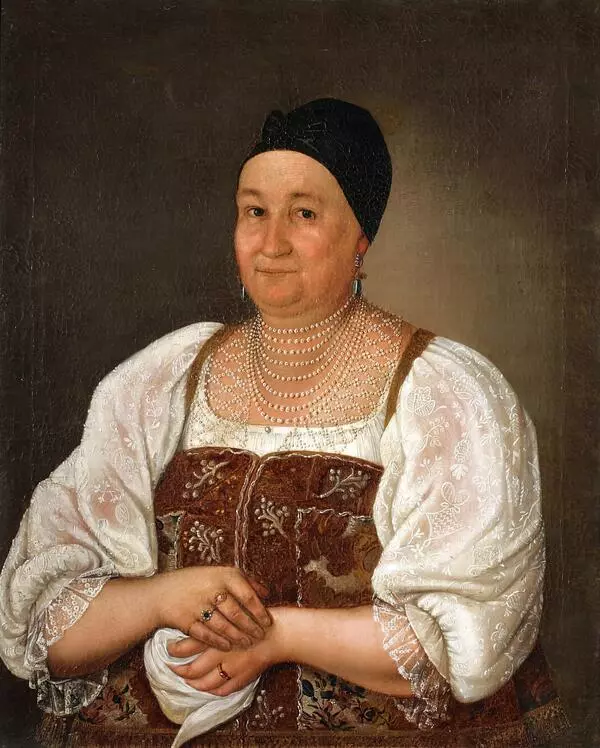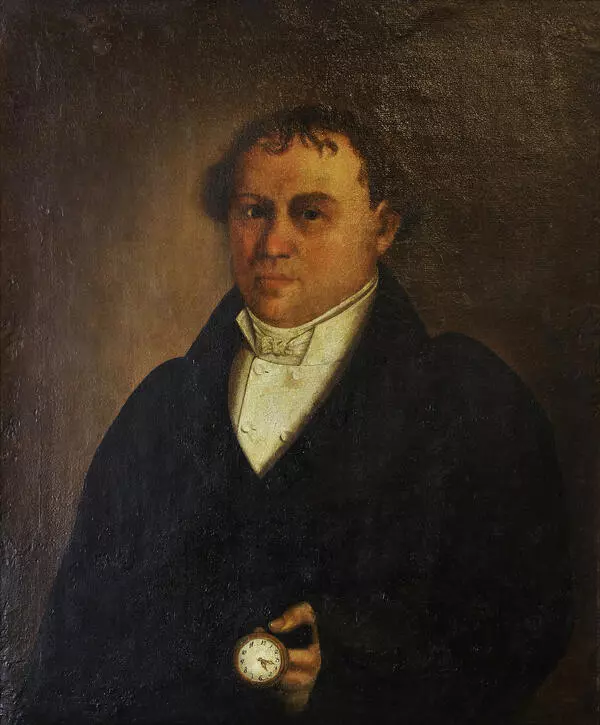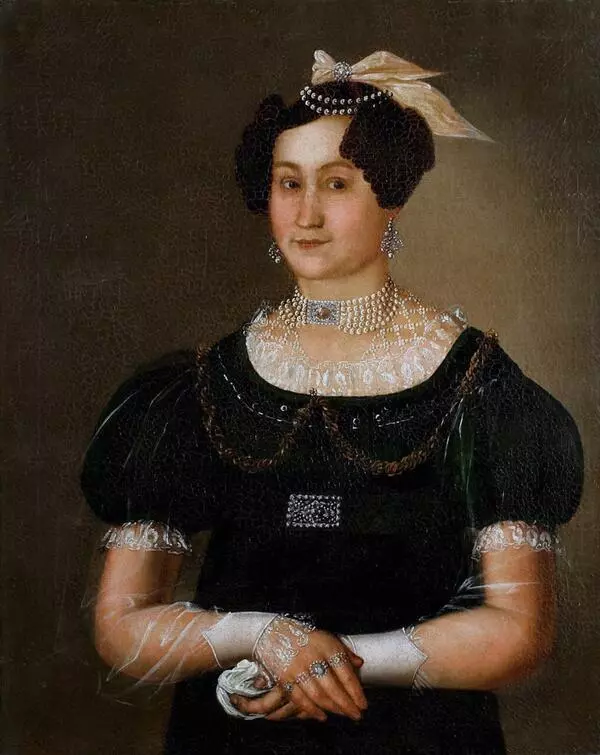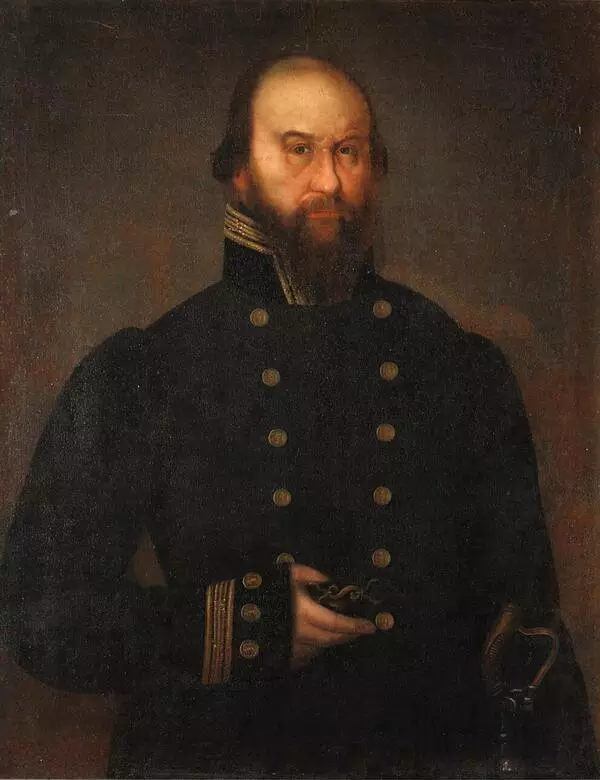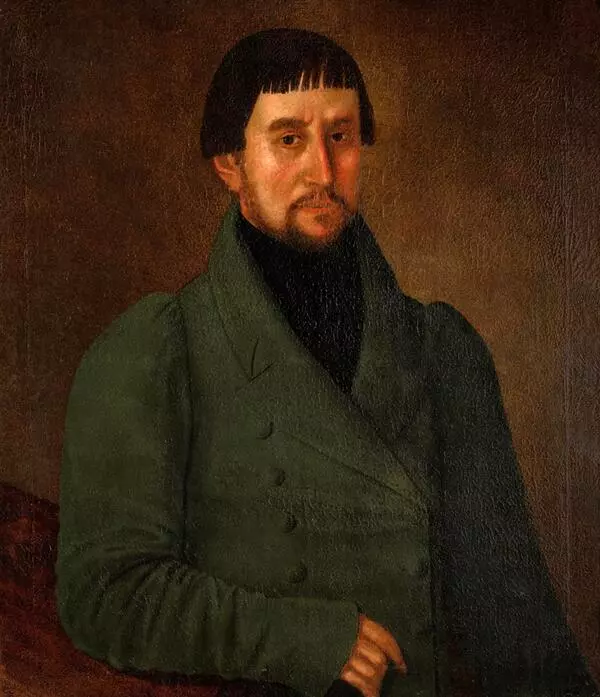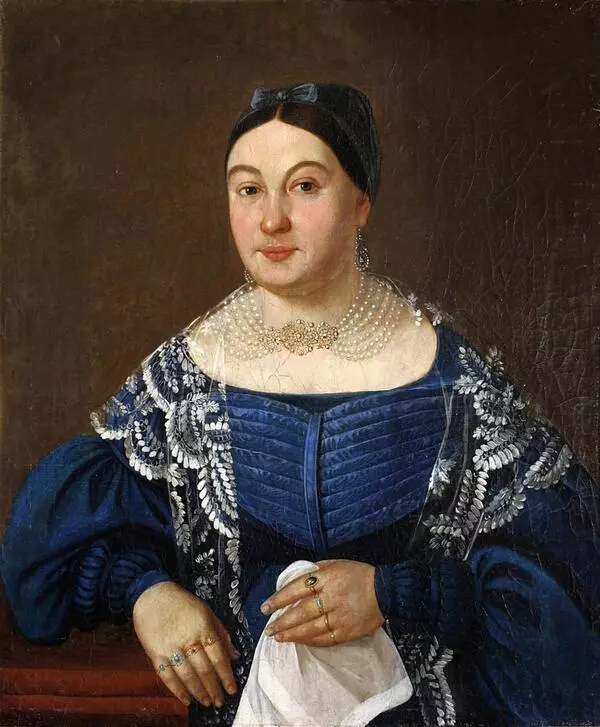The portrait of Dmitry Fyodorovich Kochurikhin and its pair — the image of his wife Ripsimiya Tikhonovna — were painted by the famous Uglich portraitist Ivan Vasilyevich Tarkhanov in 1837. The portraits of the couple continued the family gallery established in the mid-18th century.
Dmitry Kochurikhin was an Uglich dealer in linen and a councilor of the city duma. His father left him a house in Uglich, on the left bank of the Volga, and an old family library. From a young age, the merchant kept a journal every day. The manuscripts were bound and preserved by his descendants: nowadays, they are stored in various archival depositories across Russia, including the Russian State Archive of Ancient Documents, and the Manuscript Department of the Historical Museum. The diary contains priceless information about the everyday life of Uglich citizens, their relationships with relatives, family events (marriage proposals, betrothals, weddings, births, and baptismal ceremonies), overflows of the Volga, the historic fire of 1822, and the work of the city duma. Often, he also mentioned the books he had read — both religious and secular literature, mostly books on history (the “Menaion”, “The Pilgrim’s Progress” by John Bunyan translated into Russian, “Story of Troy”, and “Story of Alexander the Great”). These include 18th-century editions which, most likely, were collected by Dmitry’s father and grandfather.
In this painting, account books are depicted on the desk beside Dmitry Kochurikhin, while the merchant holds a business letter in his hands. Kochurikhin maintained an active correspondence with his business partners in Moscow and St. Petersburg where he sent linen and various textiles bought at local markets. He spent several weeks a year traveling, bought linen in neighboring towns and cities, and delivered it to Moscow where he spent a long time waiting for payments and visited Moscow churches.
The portraits of the couple share a common space, with the same window, desk, and symmetrical curtains in the background. These portraits are expressly ceremonial, resembling old parsunas and bearing the provincial traces of the Baroque style. These portraits have a special place in Tarkhanov’s oeuvre: they belong to the mature period of his work and are his only known portraits painted in the interior of a house.
Dmitry Kochurikhin was an Uglich dealer in linen and a councilor of the city duma. His father left him a house in Uglich, on the left bank of the Volga, and an old family library. From a young age, the merchant kept a journal every day. The manuscripts were bound and preserved by his descendants: nowadays, they are stored in various archival depositories across Russia, including the Russian State Archive of Ancient Documents, and the Manuscript Department of the Historical Museum. The diary contains priceless information about the everyday life of Uglich citizens, their relationships with relatives, family events (marriage proposals, betrothals, weddings, births, and baptismal ceremonies), overflows of the Volga, the historic fire of 1822, and the work of the city duma. Often, he also mentioned the books he had read — both religious and secular literature, mostly books on history (the “Menaion”, “The Pilgrim’s Progress” by John Bunyan translated into Russian, “Story of Troy”, and “Story of Alexander the Great”). These include 18th-century editions which, most likely, were collected by Dmitry’s father and grandfather.
In this painting, account books are depicted on the desk beside Dmitry Kochurikhin, while the merchant holds a business letter in his hands. Kochurikhin maintained an active correspondence with his business partners in Moscow and St. Petersburg where he sent linen and various textiles bought at local markets. He spent several weeks a year traveling, bought linen in neighboring towns and cities, and delivered it to Moscow where he spent a long time waiting for payments and visited Moscow churches.
The portraits of the couple share a common space, with the same window, desk, and symmetrical curtains in the background. These portraits are expressly ceremonial, resembling old parsunas and bearing the provincial traces of the Baroque style. These portraits have a special place in Tarkhanov’s oeuvre: they belong to the mature period of his work and are his only known portraits painted in the interior of a house.
